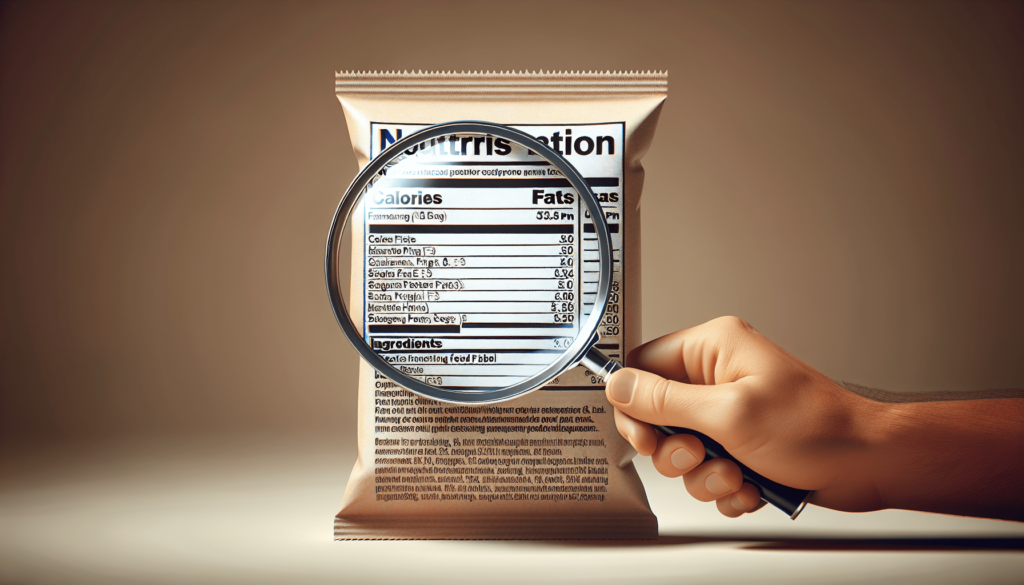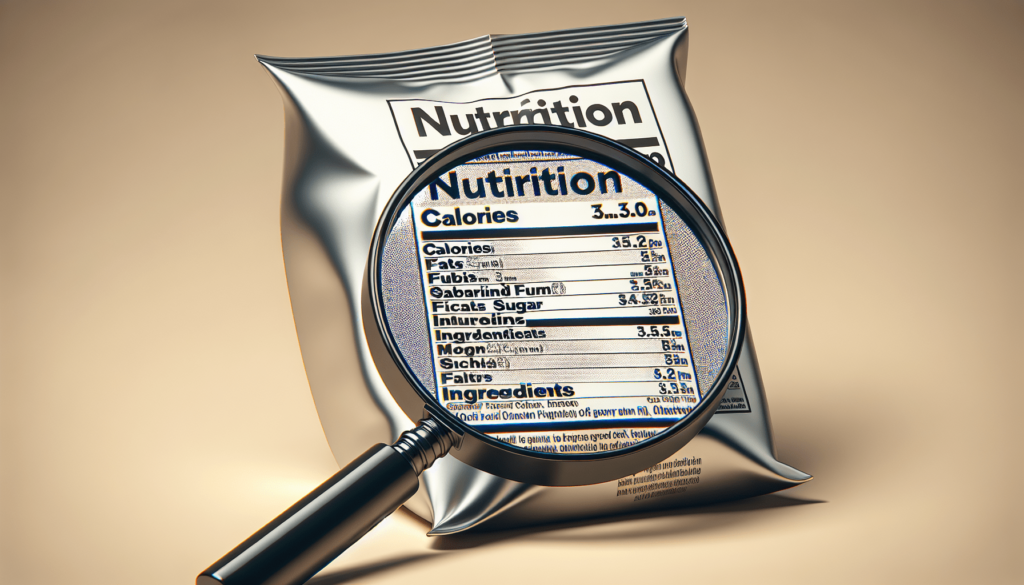Have you ever stood in the aisle of the grocery store, squinting at a food label with the intensity usually reserved for deciphering ancient hieroglyphs, and wondered if you need a decoder ring to understand what half of the words mean? You’re not alone! Food manufacturers seem to have a knack for cramming labels with enough jargon to make even a linguistics professor dizzy. But fear not, brave label reader! By the end of this article, you’ll be practically fluent in food label lingo. Just think of it as learning a new language, but one that comes with snacks.
The World of Food Labels: A Comedy of Terms
Let’s face it, food labels are the Shakespearean comedy of the modern shopping experience. It’s like they’re written in code, probably to prevent us from realizing that our favorite “healthy” snack has enough sugar to rival a candy store. This guide will not only help you break down these labels, but it might also give you a chuckle or two along the way. Who knew learning about food could be so entertaining?
Nutrition Facts: The Dietary Drama Queens
Ah, the Nutrition Facts label: a block of information typically crammed into the tiniest font possible. If middle school popularity contests were based on how important you look on a box of cereal, this label definitely takes the crown. Let’s break down this self-important rectangle.
Serving Size: A Portion of Comedy
You might assume a serving size refers to the amount you, a full-grown human, are expected to consume. But no, this quantity often reflects something akin to what a well-fed hamster might eat. If you’ve ever wondered why you don’t feel full after eating just eight potato chips, now you know. Check the serving size to gauge if two or seventeen servings will satiate your cravings!
Calories: Worth Their Weight in Gold?
Calories are the currency of food. Like Monopoly money, we sometimes try to ignore them, but they still dictate the game. Remember, these numbers relate to the serving size, so when they say “200 calories per serving,” and you eat five servings, well, good luck with your math. May it be more accurate than mine on a Sunday morning.
Fats: The Plot Thickens
There was a time when fat was the Big Bad Wolf of nutrition. But turns out, some fats are not wolves at all; they’re more like well-meaning puppies. Your job is to separate the good from the evil. Unsaturated fat, the hero, helps lower cholesterol—huzzah! Saturated fats are more like the annoying sidekick, not terrible in small doses, but don’t invite them to the party. Trans fats, the villain, are best avoided altogether!
Cholesterol: Heart’s Nemesis
Cholesterol is like that one relative who means well but no one really likes. A small amount is okay, but you prefer them in moderation. Keep an eye on this number, more so if your ticker has any issues.
Sodium: The Salt of the Earth
The sodium content tells you whether food will taste like, well, anything. Too much sodium isn’t great for your blood pressure though. It’s the balance between needing salt like a drama series needs a cliffhanger, and needing a glass of water the size of your kitchen sink afterward.
Total Carbohydrates: A Grainy Situation
Carbs are as misunderstood as teenage angst. They’re a great source of energy, but they need to be balanced with proteins and fats. On this line, you’ll find fibers and sugars—two elements you should get acquainted with.
Fiber: The Marvel of Digestion
Fiber: It’s the body’s natural broom, sweeping through your system, keeping you “regular.” It’s everyone’s favorite digestive tune-up. The more, the merrier, especially when eyeing that family-size bag of popcorn.
Sugars: The Sweet Deceivers
Sugars are like the friend who is super fun but harsh on the wallet—delightful at the moment, regretful afterward. Beware of added sugars: Mother Nature didn’t invite them across the plate, but they sneak in like party crashers.
Protein: The Muscle Maestro
Proteins are the carpenters of your body, helping build and repair tissue. Imagine them strutting about your system, fixing things with miniature hammers and hard hats. You need a good amount of protein to keep the inner construction workers motivated.
Ingredient List: Alphabet Soup
Now, onto the ingredient list, the unsung hero of the food label. Unlike a linear plot, this list starts with the main ingredients and dwindles to the supporting characters. If sugar or salt is listed first, well, perhaps consider opting for a healthier option unless, of course, you fancy living dangerously.
Deciphering Lengthy Names
If the ingredient list reads like a winning Scrabble hand, it’s time to investigate. Most artificial preservatives or colorings carry names longer than a soap opera season and sound equally as dramatic. E.g., consider stearoyl lactylate: not a medieval potion, though it might as well be.
Recognizing Added Sweeteners
Sometimes sugar is a master of disguise. It’s not just spelled “sugar,” but also dextrose, fructose, corn syrup, maltose, and other names invented after a few rounds of a thesaurus game in the boardroom. Just be aware of their cunning nature.
Spotting Artificial Ingredients
These are the text fillers, the padding in the cushions of the food world. Numbered dyes and “flavors” as general as saying your hair color is “light brownish-isn” are often synthetic. Unless you’re looking for a body reminiscent of a science experiment, limit their use.
Daily Values: Misleading Percentages
The percentage of the Daily Value (DV) tells you how much one serving will contribute to your daily diet based on a 2,000-calorie expenditure. However, much like my aim at a trash can, it’s not always an accurate reflection. If you’re 3 feet tall or a hundred-meter sprinter, these numbers might only apply if you squint and tilt your head.
Certifications and Claims: Food Label Drama Club
Sometimes, a label looks like it received more praise than a Broadway star on opening night. Here’s a rundown of these endorsements and what they might actually mean for your buying decisions.
Organic: The Table of Food Hierarchy
Getting an “organic” label is akin to receiving the Nobel Prize in the food world. It means the crop or animal was raised without synthetic fertilizers or chemicals, although even pesticides can get invited to this shindig, provided they’re of the non-synthetic variety.
Non-GMO: Friends with Nature
Non-GMO labels mean no genetic engineering went into creating that food. If you found conversations about GMOs as head-scratching as early calculus classes, just remember: with this label, food’s natural portfolio remains unaltered.
Gluten-Free: The Digestive Drama Queen
For those who politically align themselves with or against gluten, this label is like a blaring neon sign. If you’re celiac or gluten-sensitive, this one’s for you. If not, know that gluten hasn’t yet transformed anyone into a lampshade.
“Natural”: A Term Loosely Defined
The great Houdini among labels, “natural” could mean anything from “straight from Mother Earth” to “crafted in a lab that happens to use ‘natural’ as part of their company’s name.” This term is open to a wide range of interpretations.
Fair Trade: Ethically Approved Choices
Fair Trade goods try to make sure that everyone in the supply chain—from farmer to consumer—is a happy camper. Think of them as the therapist of the food world, saying, “It’s okay not to be okay… as long as you’ve been fairly compensated.”
Allergen Information: The Warning Drama
Allergen labels are kind of like the traffic warnings of the food world: “Caution: Nuts Ahead,” “Warning: Contains Dairy,” or my personal favorite, “May Contain Traces of Absolutely Everything.” These save you from unfortunate surprises that could spoil more than just your meal.
The 8 Major Allergens
Allergen labels give fair warning about the eight major food allergens that can make your allergies act up faster than a toddler’s tantrum: milk, eggs, fish, shellfish, tree nuts, peanuts, wheat, and soybeans. These allergens might not harm the average Joe, but to those with allergies, it’s like treading through a minefield blindfolded.

Sneaky Marketing Terms: The Drama Queens of Health Claims
Much like those hefty disclaimers in infomercials, marketing terms on food labels have one goal: make you feel better about buying the product, even if it involves stretching the truth so tightly you’d think it was yoga.
“Reduced”: The Legal Loophole
Reduced-fat, reduced-sugar, reduced-sound-logic—it’s all good! However, “reduced” merely means a product has 25% less of something compared to the original offering. It doesn’t exactly mean “healthy,” especially if the original was as laden as a buffet table.
“Light” or “Lite”: The Optical Illusion
This label is pure genius or trickery, depending on your perspective. Often “light” can mean fewer calories, but sometimes, it just refers to color or flavor. It’s like selling tickets to a comedy show and delivering a physics lecture instead.
“Free”: The Ultimate Misnomer
When reading “fat-free” or “sugar-free,” envision Marvel superheroes duking it out: fat is gone, but sugar may assert dominance—or vice versa. Plus, in some cases, “free” just means less than 0.5 grams per serving. Having five servings of zero could result in something surprisingly more than zero.
“Superfood”: The Nutritional Overachiever
Beware the “Superfood”—a fantastic disguise for hip, trendy foods, often overpriced and making promises akin to those late-night miracle product ads. These are foods that want a gold star for doing backflips when simply standing is possible.
Conclusion: You, Too, Can Decode This Madness!
Armed with this guide, you possess the knowledge to bravely stride into the grocery aisle with confidence, as opposed to just wandering between shelves like a confused game show contestant. Whether you’re on a nutritional odyssey or simply trying to find a reasonably sized snack for movie night, you now hold the key to understanding food labels. Remember: labels may attempt to dazzle you with scientific gobbledygook and impressive graphs, but ultimately, they reveal a story that you now know how to read. Enjoy your grocery store adventures and may the labels be ever in your favor!

